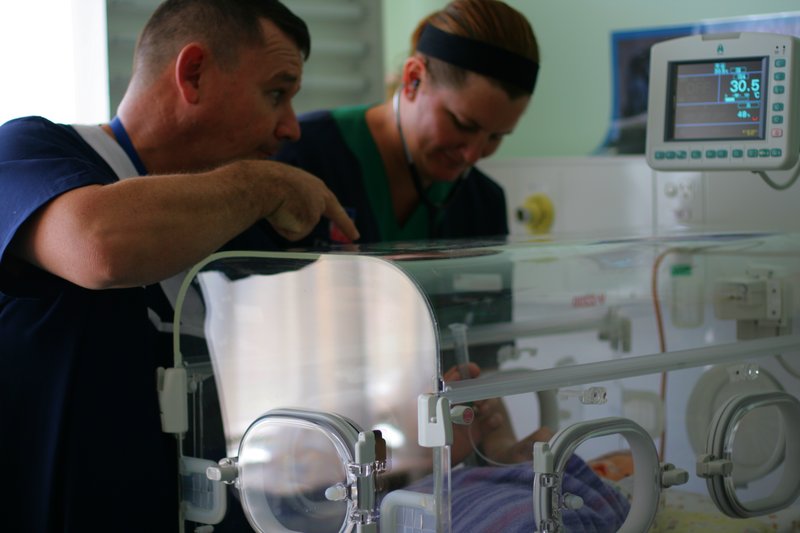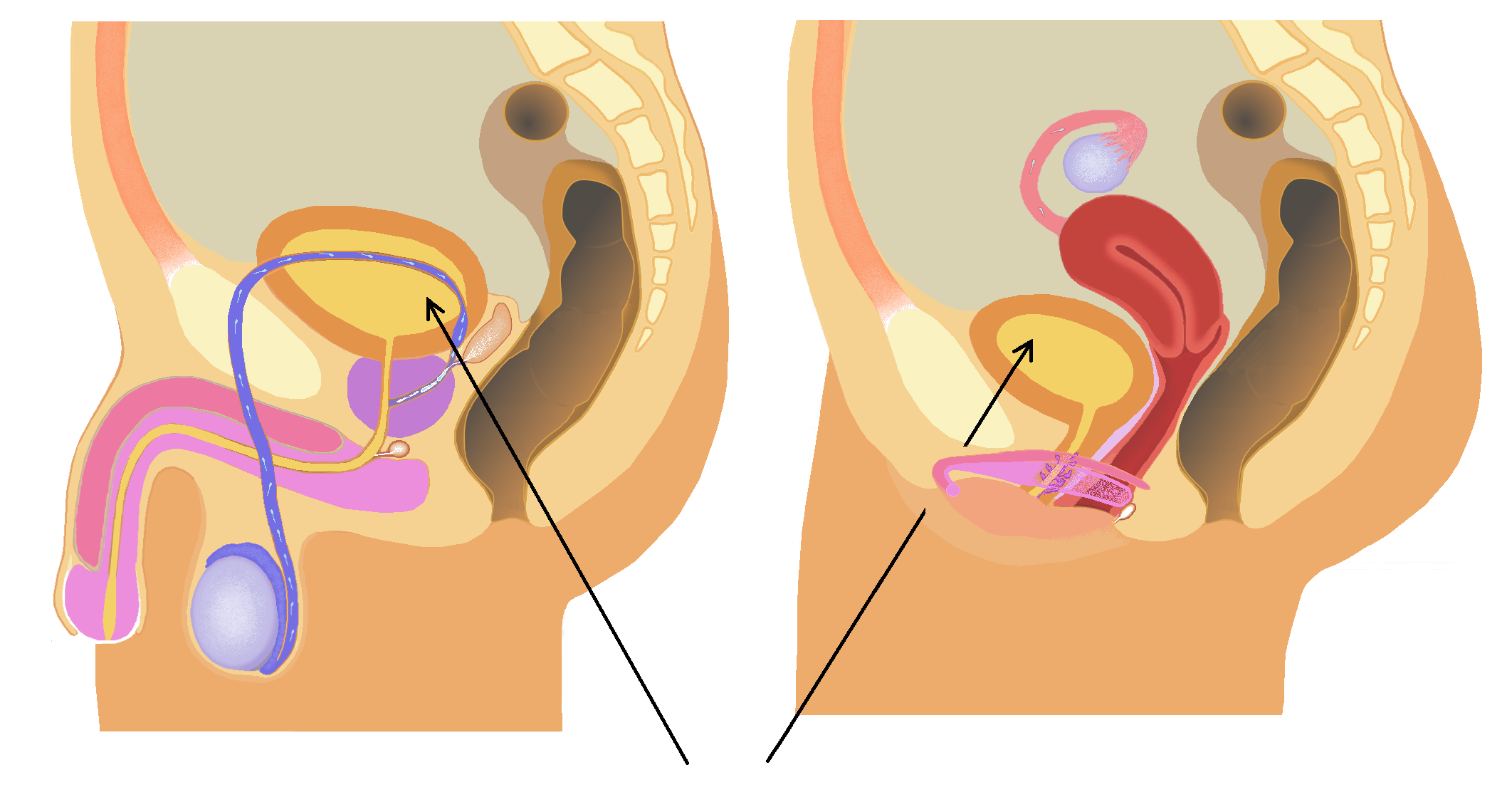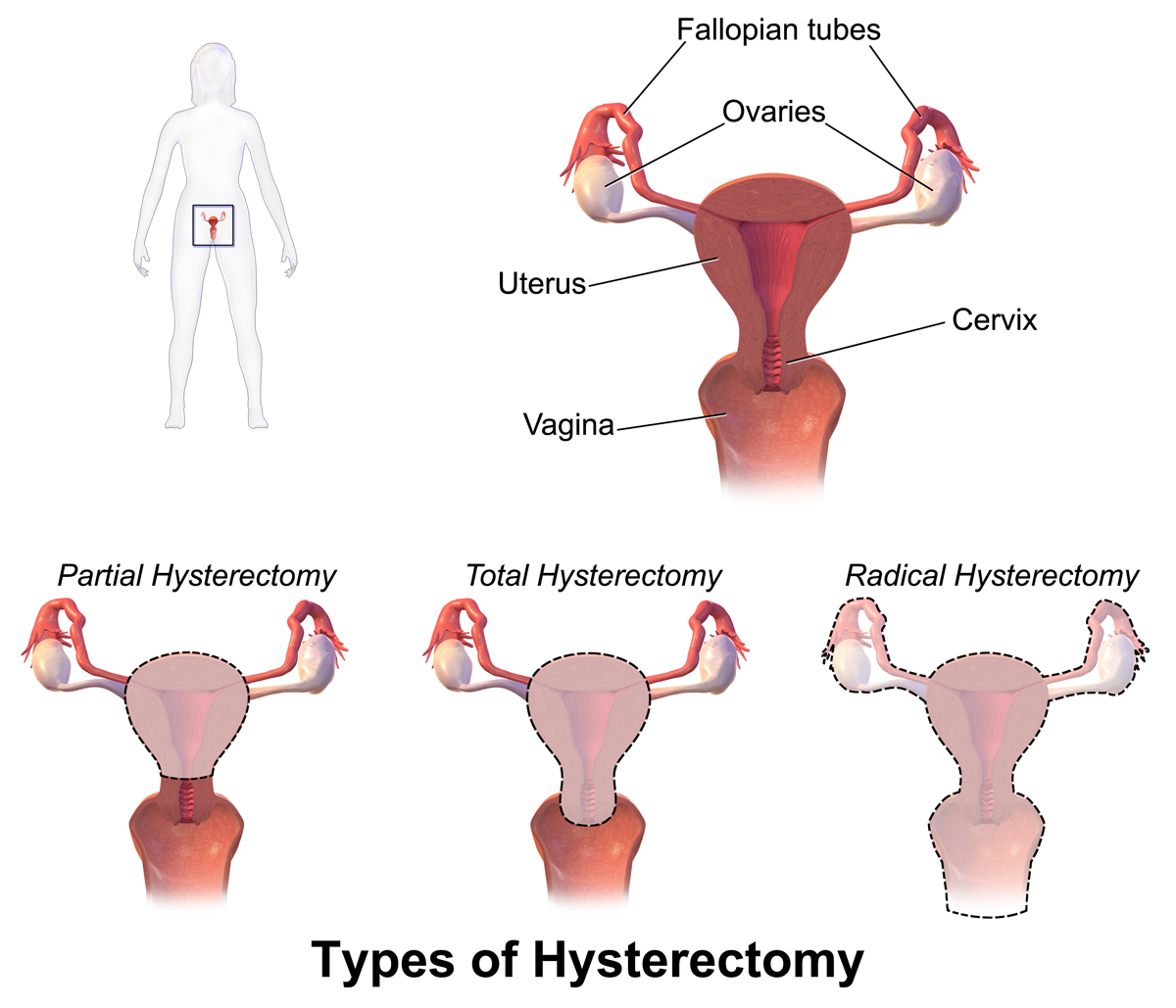|
Vaginal Birth After Caesarean
In case of a previous caesarean section a subsequent pregnancy can be planned to be delivered by either of the following two main methods: * Vaginal birth after caesarean section (VBAC) * Elective repeat caesarean section (ERCS) Both have higher risks than a vaginal birth with no previous caesarean section. There are many issues which affect the decision for planned vaginal or planned abdominal delivery. There is a slightly higher risk for uterine rupture and perinatal death of the child with VBAC than ERCS, but the absolute increased risk of these complications is small, especially with only one previous low transverse caesarean section. A large majority of women planning VBAC will achieve a successful vaginal delivery, although there are more risks to the mother and baby from an unplanned caesarean section than from an ERCS. Successful VBAC also reduces the risk of complications in future pregnancies more than ERCS. In 2010, the National Institutes of Health, U.S. Department of ... [...More Info...] [...Related Items...] OR: [Wikipedia] [Google] [Baidu] |
Caesarean Section
Caesarean section, also known as C-section, cesarean, or caesarean delivery, is the Surgery, surgical procedure by which one or more babies are Childbirth, delivered through an incision in the mother's abdomen. It is often performed because vaginal delivery would put the mother or child at risk (of paralysis or even death). Reasons for the operation include, but are not limited to, obstructed labor, twin pregnancy, pre-eclampsia, high blood pressure in the mother, breech birth, shoulder presentation, and problems with the placenta or umbilical cord. A caesarean delivery may be performed based upon the shape of the mother's pelvis or history of a previous C-section. A trial of Vaginal birth after previous C-section, vaginal birth after C-section may be possible. The World Health Organization recommends that caesarean section be performed only when medically necessary. A C-section typically takes 45 minutes to an hour. It may be done with a spinal block, where the woman is awake ... [...More Info...] [...Related Items...] OR: [Wikipedia] [Google] [Baidu] |
Infant Respiratory Distress Syndrome
Infant respiratory distress syndrome (IRDS), also known as surfactant deficiency disorder (SDD), and previously called hyaline membrane disease (HMD), is a syndrome in premature infants caused by developmental insufficiency of pulmonary surfactant production and structural immaturity in the lungs. It can also be a consequence of neonatal infection and can result from a genetic problem with the production of surfactant-associated proteins. IRDS affects about 1% of newborns and is the leading cause of morbidity and mortality in preterm infants. Data have shown the choice of elective caesarean sections to strikingly increase the incidence of respiratory distress in term infants; dating back to 1995, the UK first documented 2,000 annual caesarean section births requiring neonatal admission for respiratory distress. The incidence decreases with advancing gestational age, from about 50% in babies born at 26–28 weeks to about 25% at 30–31 weeks. The syndrome is more frequent in m ... [...More Info...] [...Related Items...] OR: [Wikipedia] [Google] [Baidu] |
Intensive Care Unit
An intensive care unit (ICU), also known as an intensive therapy unit or intensive treatment unit (ITU) or critical care unit (CCU), is a special department of a hospital or health care facility that provides intensive care medicine. An intensive care unit (ICU) was defined by the task force of the World Federation of Societies of Intensive and Critical Care Medicine as "an organized system for the provision of care to critically ill patients that provides intensive and specialized medical and nursing care, an enhanced capacity for monitoring, and multiple modalities of physiologic organ support to sustain life during a period of life-threatening organ system insufficiency." Patients may be referred directly from an emergency department or from a ward if they rapidly deteriorate, or immediately after surgery if the surgery is very invasive and the patient is at high risk of complications. History In 1854, Florence Nightingale left for the Crimean War, where triage was used ... [...More Info...] [...Related Items...] OR: [Wikipedia] [Google] [Baidu] |
Ureter
The ureters are tubes composed of smooth muscle that transport urine from the kidneys to the urinary bladder. In an adult human, the ureters typically measure 20 to 30 centimeters in length and about 3 to 4 millimeters in diameter. They are lined with urothelial cells, a form of transitional epithelium, and feature an extra layer of smooth muscle in the lower third to aid in peristalsis. The ureters can be affected by a number of diseases, including urinary tract infections and kidney stone. is when a ureter is narrowed, due to for example chronic inflammation. Congenital abnormalities that affect the ureters can include the development of two ureters on the same side or abnormally placed ureters. Additionally, reflux of urine from the bladder back up the ureters is a condition commonly seen in children. The ureters have been identified for at least two thousand years, with the word "ureter" stemming from the stem relating to urinating and seen in written records since at ... [...More Info...] [...Related Items...] OR: [Wikipedia] [Google] [Baidu] |
Urinary Bladder
The bladder () is a hollow organ in humans and other vertebrates that stores urine from the Kidney (vertebrates), kidneys. In placental mammals, urine enters the bladder via the ureters and exits via the urethra during urination. In humans, the bladder is a distensible organ that sits on the pelvic floor. The typical adult human bladder will hold between 300 and (10 and ) before the urge to empty occurs, but can hold considerably more. The Latin phrase for "urinary bladder" is ''vesica urinaria'', and the term ''vesical'' or prefix ''vesico-'' appear in connection with associated structures such as vesical veins. The modern Latin word for "bladder" – ''cystis'' – appears in associated terms such as cystitis (inflammation of the bladder). Structure In humans, the bladder is a hollow muscular organ situated at the base of the pelvis. In gross anatomy, the bladder can be divided into a broad (base), a body, an apex, and a neck. The apex (also called the vertex) is directed ... [...More Info...] [...Related Items...] OR: [Wikipedia] [Google] [Baidu] |
Hysterectomy
Hysterectomy is the surgical removal of the uterus and cervix. Supracervical hysterectomy refers to removal of the uterus while the cervix is spared. These procedures may also involve removal of the ovaries (oophorectomy), fallopian tubes ( salpingectomy), and other surrounding structures. The term “partial” or “total” hysterectomy are lay-terms that incorrectly describe the addition or omission of oophorectomy at the time of hysterectomy. These procedures are usually performed by a gynecologist. Removal of the uterus is a form of sterilization, rendering the patient unable to bear children (as does removal of ovaries and fallopian tubes) and has surgical risks as well as long-term effects, so the surgery is normally recommended only when other treatment options are not available or have failed. It is the second most commonly performed gynecological surgical procedure, after cesarean section, in the United States. Nearly 68 percent were performed for conditions such as ... [...More Info...] [...Related Items...] OR: [Wikipedia] [Google] [Baidu] |
Placenta Accreta
Placenta accreta spectrum (PAS) is a medical condition that occurs when all or part of the placenta attaches abnormally to the ''myometrium'' (the muscular layer of the uterine wall) during pregnancy. This condition was first documented in medical literature in 1927. Three grades of abnormal placental attachment are defined according to the depth of attachment and invasion into the muscular layers of the uterus. From least to most invasive uterine attachment they are: ''Placenta'' ''Accreta,'' ''Increta,'' and ''Percreta.'' Because of abnormal attachment to the myometrium, PAS is associated with an increased risk of massive hemorrhaging, heavy bleeding, at the time of attempted vaginal delivery. This leads many to deliver through a caesarean section. The need for transfusion of blood products is frequent, and a surgical removal of the uterus (hysterectomy) is sometimes required to control life-threatening bleeding. Rates of placenta accreta are increasing, and are even higher in ... [...More Info...] [...Related Items...] OR: [Wikipedia] [Google] [Baidu] |
Advanced Maternal Age
Advanced maternal age, in a broad sense, is the instance of a woman being of an older age at a stage of reproduction, although there are various definitions of specific age and stage of reproduction. The variability in definitions is in part explained by the effects of increasing age occurring as a continuum rather than as a threshold effect. Average age at first childbirth has been increasing, especially in OECD countries, among which the highest average age is 32.6 years (South Korea) followed by 32.1 years (Ireland and Spain). In a number of European countries (Spain), the mean age of women at first childbirth has crossed the 30 year threshold. This process is not restricted to Europe. Asia, Japan and the United States are all seeing average age at first birth on the rise, and increasingly the process is spreading to countries in the developing world such as China, Turkey and Iran. In the U.S., the average age of first childbirth was 26.9 in 2018. Advanced ... [...More Info...] [...Related Items...] OR: [Wikipedia] [Google] [Baidu] |
Cervical Dilation
Cervical dilation (or cervical dilatation) is the opening of the cervix, the entrance to the uterus, during childbirth, miscarriage, induced abortion, or gynecological surgery. Cervical dilation may occur naturally, or may be induced surgically or medically. In childbirth In the later stages of pregnancy, the cervix may already have opened up to 1–3 cm (or more in rarer circumstances), but during labor, repeated uterine contractions lead to further widening of the cervix to about 6 centimeters. From that point, pressure from the presenting part (head in vertex births or bottom in breech births), along with uterine contractions, will dilate the cervix to 10 centimeters, which is "complete." Cervical dilation is accompanied by effacement, the thinning of the cervix. General guidelines for cervical dilation: * Latent phase: 0–3 centimeters * Active labor: 4–7 centimeters * Transition: 8–10 centimeters * Complete: 10 centimeters. Delivery of the infant takes place ... [...More Info...] [...Related Items...] OR: [Wikipedia] [Google] [Baidu] |
Epidural Anaesthesia
Epidural administration (from Ancient Greek ἐπί, "upon" + '' dura mater'') is a method of medication administration in which a medicine is injected into the epidural space around the spinal cord. The epidural route is used by physicians and nurse anesthetists to administer local anesthetic agents, analgesics, diagnostic medicines such as radiocontrast agents, and other medicines such as glucocorticoids. Epidural administration involves the placement of a catheter into the epidural space, which may remain in place for the duration of the treatment. The technique of intentional epidural administration of medication was first described in 1921 by the Spanish Aragonese military surgeon Fidel Pagés. Epidural anaesthesia causes a loss of sensation, including pain, by blocking the transmission of signals through nerve fibres in or near the spinal cord. For this reason, epidurals are commonly used for pain control during childbirth and surgery, for which the technique is c ... [...More Info...] [...Related Items...] OR: [Wikipedia] [Google] [Baidu] |
Obstructed Labour
Obstructed labour, also known as labour dystocia, is the baby not exiting the pelvis because it is physically blocked during childbirth although the uterus contracts normally. Complications for the baby include not getting enough oxygen which may result in death. It increases the risk of the mother getting an infection, having uterine rupture, or having post-partum bleeding. Long-term complications for the mother include obstetrical fistula. Obstructed labour is said to result in prolonged labour, when the active phase of labour is longer than 12 hours. The main causes of obstructed labour include a large or abnormally positioned baby, a small pelvis, and problems with the birth canal. Abnormal positioning includes shoulder dystocia where the anterior shoulder does not pass easily below the pubic bone. Risk factors for a small pelvis include malnutrition and a lack of exposure to sunlight causing vitamin D deficiency. It is also more common in adolescence as the pelvis ma ... [...More Info...] [...Related Items...] OR: [Wikipedia] [Google] [Baidu] |




